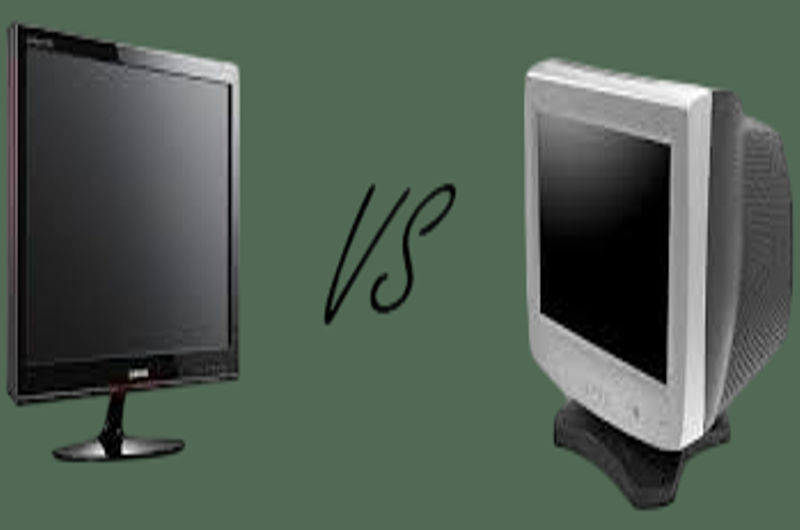The Evolution of Display Technology: Key Differences Between Old CRT Screens and Modern LCD Screens
Introduction: From Bulky Tubes to Slim Panels
The journey from Cathode Ray Tube (CRT) monitors to Liquid Crystal Display (LCD) screens marks one of the most significant advancements in display technology. While CRT screens dominated the 20th century, LCDs revolutionized the way we interact with computers, TVs, and mobile devices.
This article explores the key differences between old CRT screens and modern LCD screens, covering image quality, power consumption, design, and usability.
1. Display Technology: How They Work
CRT (Cathode Ray Tube) Screens
Function: Uses an electron gun to fire beams at a phosphor-coated screen, creating images through light emission.
Refresh Rate: High refresh rates (75Hz–120Hz), reducing motion blur.
Color Production: Phosphors glow in red, green, and blue (RGB) when struck by electrons.
LCD (Liquid Crystal Display) Screens
Function: Uses liquid crystals sandwiched between polarized glass panels, with a backlight (LED or CCFL) illuminating pixels.
Refresh Rate: Typically 60Hz–240Hz (gaming monitors go higher).
Color Production: Uses RGB subpixels with precise color control.
Key Difference:
✔ CRTs emit light directly, while LCDs rely on a backlight.
2. Image Quality Comparison
Feature CRT Screens LCD Screens
Resolution Lower max resolution (typically 1024×768) Higher resolutions (Full HD, 4K, 8K)
Color Accuracy Good, but can fade over time More consistent, wider color gamut
Viewing Angles Excellent (visible from all angles) Limited (IPS panels improve this)
Contrast Ratio High (deep blacks) Lower in older LCDs (OLED fixes this)
Response Time Nearly instant (1ms or less) Slower (1ms–5ms in modern gaming LCDs)
Why It Matters:
CRTs were better for fast motion (gaming, animations).
LCDs offer sharper text and higher resolutions.
3. Physical Design & Space Efficiency
CRT Monitors
Bulky and heavy (weighed 30–50 lbs).
Deep cabinets (required significant desk space).
Curved screens (early models had noticeable distortion).
LCD Monitors
Slim and lightweight (weighs under 10 lbs).
Flat panels (saves desk space, wall-mountable).
Thin bezels (ideal for multi-monitor setups).
Winner: LCDs for space-saving and modern aesthetics.
4. Power Consumption & Heat Output
CRT Screens:
Consumed 80–150 watts (higher for larger screens).
Generated significant heat due to electron beam activity.
LCD Screens:
Use 20–50 watts (LED-backlit models are even more efficient).
Produce minimal heat, reducing cooling needs.
Energy Savings: Switching to LCDs cut power usage by 50–70%.
5. Durability & Lifespan
CRT Screens:
Prone to screen burn-in (permanent image retention).
Degraded over time (phosphors lose brightness).
Heavy glass construction made them fragile if dropped.
LCD Screens:
No burn-in issues (except OLED variants).
Longer lifespan (50,000+ hours for backlights).
More resistant to shocks (lighter, less glass).
Maintenance: LCDs require less calibration over time.
6. Eye Strain & Health Impact
CRT Screens:
Flickered at low refresh rates (caused eye fatigue).
Emitted low levels of X-ray radiation (shielded but still a concern).
LCD Screens:
Flicker-free (LED backlighting reduces strain).
Blue light filters available in modern displays.
Matte coatings reduce glare.
Health Winner: LCDs are easier on the eyes.
7. Gaming & Motion Performance
CRT Advantages for Gamers
Near-zero input lag (critical for competitive gaming).
Higher refresh rates (some supported 160Hz).
No motion blur (perfect for fast-paced games).
LCD Advantages for Gamers
Higher resolutions (4K gaming possible).
Adaptive Sync (FreeSync/G-Sync) eliminates screen tearing.
Thinner bezels for immersive setups.
Retro Gaming Note: Many classic gamers still prefer CRTs for authentic visuals.
8. Price & Availability
CRT Screens:
No longer manufactured (since mid-2000s).
Used market only (some demand from retro enthusiasts).
LCD Screens:
Affordable and widely available.
Prices dropped significantly (4K monitors under $300).
Market Shift: LCDs dominate due to cost efficiency and better tech.
Conclusion: Why LCDs Won the Display War
While CRT screens had superior motion handling and deep blacks, LCDs triumphed due to:
✔ Slim, lightweight designs
✔ Higher resolutions and sharper images
✔ Lower power consumption
✔ Reduced eye strain
Final Verdict:
For retro gaming/artistic use: CRTs still have niche appeal.
For modern computing, gaming, and media: LCDs (and newer OLEDs) are the clear choice.
The shift from CRT to LCD marked a technological leap, paving the way for today’s ultra-thin, energy-efficient, and ultra-high-definition displays.


